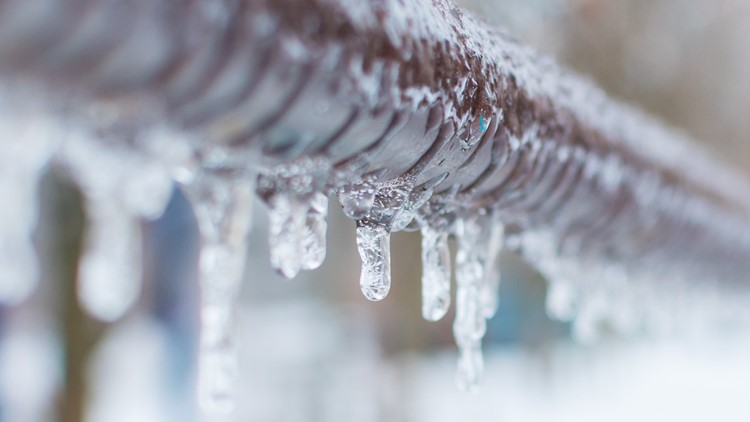We have stumbled upon this article on Winter Plumbing Precautions: Preventing Frozen Pipes down the page on the net and accepted it made good sense to quickly share it with you on this site.

Cold weather can damage your plumbing, especially by freezing pipes. Right here's exactly how to avoid it from occurring and what to do if it does.
Intro
As temperature levels decrease, the danger of frozen pipes rises, potentially leading to pricey fixings and water damage. Recognizing exactly how to avoid frozen pipelines is vital for house owners in cold environments.
Recognizing Frozen Pipelines
What triggers pipelines to freeze?
Pipelines freeze when revealed to temperatures listed below 32 ° F (0 ° C) for extended durations. As water inside the pipes ices up, it expands, putting pressure on the pipeline walls and possibly creating them to burst.
Dangers and problems
Frozen pipes can cause water supply interruptions, building damage, and costly repair services. Ruptured pipelines can flood homes and cause comprehensive architectural damages.
Signs of Frozen Pipes
Identifying frozen pipes early can avoid them from rupturing.
Exactly how to determine frozen pipes
Try to find reduced water circulation from faucets, unusual odors or noises from pipelines, and noticeable frost on subjected pipes.
Avoidance Tips
Shielding vulnerable pipes
Wrap pipelines in insulation sleeves or use warm tape to protect them from freezing temperatures. Concentrate on pipelines in unheated or exterior areas of the home.
Home heating strategies
Keep interior areas sufficiently warmed, specifically areas with plumbing. Open cupboard doors to enable warm air to distribute around pipes under sinks.
Protecting Outdoor Plumbing
Garden hose pipes and outdoor faucets
Disconnect and drain yard tubes prior to winter. Install frost-proof faucets or cover exterior taps with protected caps.
What to Do If Your Pipes Freeze
Immediate activities to take
If you believe icy pipes, maintain taps open up to eliminate stress as the ice melts. Make use of a hairdryer or towels soaked in hot water to thaw pipes slowly.
Long-Term Solutions
Architectural changes
Consider rerouting pipes away from exterior wall surfaces or unheated locations. Include additional insulation to attic rooms, cellars, and crawl spaces.
Updating insulation
Buy top quality insulation for pipes, attics, and walls. Proper insulation aids keep regular temperature levels and lowers the danger of frozen pipes.
Conclusion
Preventing frozen pipes calls for aggressive procedures and fast actions. By recognizing the causes, signs, and safety nets, homeowners can safeguard their pipes throughout winter.
5 Ways to Prevent Frozen Pipes
Drain Outdoor Faucets and Disconnect Hoses
First, close the shut-off valve that controls the flow of water in the pipe to your outdoor faucet. Then, head outside to disconnect and drain your hose and open the outdoor faucet to allow the water to completely drain out of the line. Turn off the faucet when done. Finally, head back to the shut-off valve and drain the remaining water inside the pipe into a bucket or container. Additionally, if you have a home irrigation system, you should consider hiring an expert to clear the system of water each year.
Insulate Pipes
One of the best and most cost-effective methods for preventing frozen water pipes is to wrap your pipes with insulation. This is especially important for areas in your home that aren’t exposed to heat, such as an attic. We suggest using foam sleeves, which can typically be found at your local hardware store.
Keep Heat Running at 65
Your pipes are located inside your walls, and the temperature there is much colder than the rest of the house. To prevent your pipes from freezing, The Insurance Information Institute suggests that you keep your home heated to at least 65 degrees, even when traveling. You may want to invest in smart devices that can keep an eye on the temperature in your home while you’re away.
Leave Water Dripping
Moving water — even a small trickle — can prevent ice from forming inside your pipes. When freezing temps are imminent, start a drip of water from all faucets that serve exposed pipes. Leaving a few faucets running will also help relieve pressure inside the pipes and help prevent a rupture if the water inside freezes.
Open Cupboard Doors
Warm your kitchen and bathroom pipes by opening cupboards and vanities. You should also leave your interior doors ajar to help warm air circulate evenly throughout your home.

Hopefully you enjoyed reading our topic about Preventing and dealing with frozen pipes. Thank you for taking a few minutes to read through our post. In case you enjoyed reading our blog post kindly consider to pass it around. Thanks a lot for your time spent reading it.
View Website